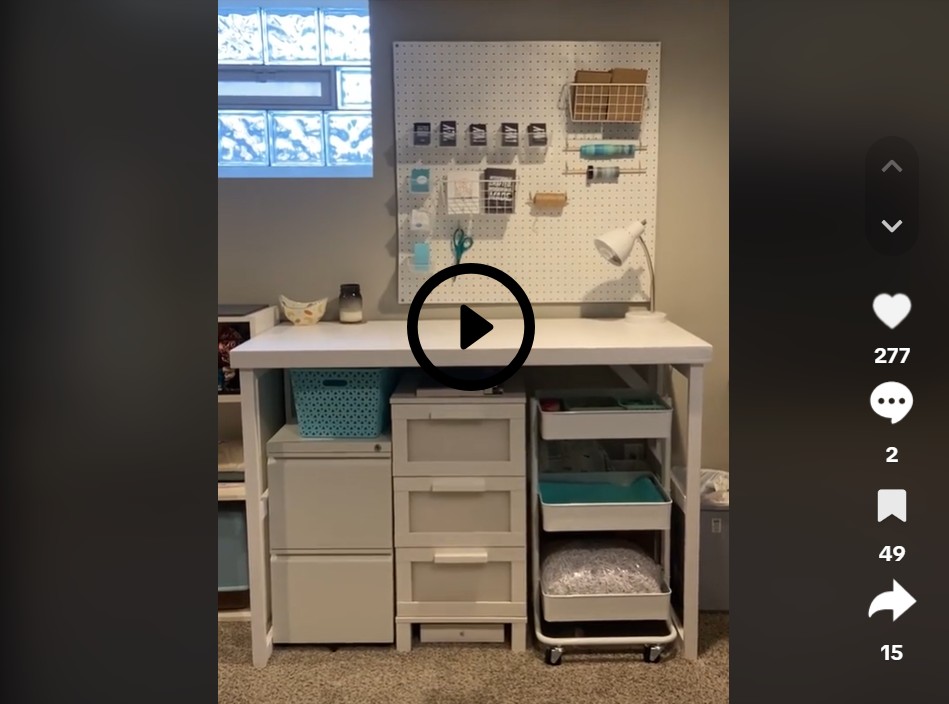How to Store Your Packaging in a Small Workspace
13th Mar 2024
With so many small businesses owners working straight from home-based workshops, it can be hard to work with often limited space to facilitate everything from product creation to packing and shipping. However, there are a few ways that business owners can make their space work better for them and their business. When it comes to getting products out the door and to the customer, the way you store your packaging can make a huge difference to productivity.
Choosing the Right Space
The first step to creating your personal shipping station is simple, but key. You’ll need to pick a space in your workshop that can be as functional as possible - this will look different for everyone depending on the space you have available, but here’s some basic things you should consider when picking out a workspace:
- Work surface: One thing that you’ll definitely need for packaging up products ready to ship is a flat work surface. So, wherever you choose to set up your shipping station will need enough room for this.
- Take advantage of vertical space: Limited floor space? Don’t forget to think about the vertical space that can be used for shelving and storage racks for your packaging. You can also take advantage of pegboards to hang smaller shipping supplies, keeping your work surface and floor free from clutter.
- Make it mobile: If you’re someone who rearranges their space a lot and needs that flexibility, consider a mobile shipping station. This can be done using a service cart, desk, or rolling toolbox - allowing you to relocate whenever you need.
How to Store Your Packaging
We know that packaging plays a huge role in customer experience and getting your brand identity across, which is why you should be storing your packaging efficiently and with care, to ensure it’s in great condition by the time it reaches your customer.
Here’s some tips:
- Store in a cool, dry space to avoid damp and mould - this is especially important with cardboard packaging as it’s a porous material that can easily absorb moisture.
- If your business boasts vibrant, colourful packaging - be sure to store away from direct sunlight to avoid fading.
- Store flattened boxes horizontally to stop them from bending or creasing.
- Storage bins and drawers may protect packaging and keep them accessible.
- Tissue paper racks are an attractive way to store tissue paper that prevents creasing and ripping.
- Dispenser gadgets can be used to streamline the packaging process.
If stored correctly and under the right conditions, cardboard packaging can be stored for up to two years before showing signs of damage.
Stock Up Your Station
As well as the packaging itself, your shipping station will need some essential tools and supplies such as:
- Scissors
- Tape measure
- Box cutter
- Scales
- Ruler/Tape measure
- Packing tape and dispenser
- ‘Fragile’ stickers (if needed)
- Bubble wrap (or you can opt for a more eco-friendly Embossed Paper Bubble Wrap)
- Biodegradable void fill (to fill empty space and avoid damage)
- Shipping label printer (these are super handy as they connect to your online store and print labels automatically as orders come through - also, some can even print stickers which can level up your packaging game!)
Create a Packaging System
For those who may be packing and shipping straight from their home instead of a warehouse, it’s extra important to create and stick to an operating procedure to ensure maximum efficiency, productivity and consistency. Your shipping process should be whatever works for you, but here’s an example of a good system to start you off:
- Print packing slips and labels.
- Keep packing slips/labels with corresponding items to avoid confusion.
- Assemble boxes/packaging containers.
- Quality check items, wrap if necessary.
- Double check that all details are correct (e.g. name, address, item) and then place the item in the packaging.
- Add any marketing materials to the package, e.g. thank you note, discount/qr code.
- Seal the package and attach the shipping label.
- Place ready-to-go packages in a designated area.
- Repeat!
Although you may feel that you don’t need to create a packaging system (especially if you’re an experienced business owner), just writing it down and having a visual cue can be helpful to stay on track and ensure that you’re sticking to best practices for your business.
Operating a small business straight from your home can be difficult, especially when space is limited. However, by following the above guide, you can make the most out of your packaging and your workspace. Whatever you’re selling, our bespoke Box Builder can help with all your packaging needs so you can focus on getting your products to customers securely and in style.

James Palfrey-Smith is the Commercial Manager at ASC Direct with extensive experience in both operations and sales. James is passionate about solving packaging problems, delivering fast customer support, and building lasting relationships. Outside of work, he enjoys outdoor activities like hiking and skiing. A fan of real ale and business podcasts, he continuously seeks personal and professional growth.
Find James on Linkedin
Find out more about James


